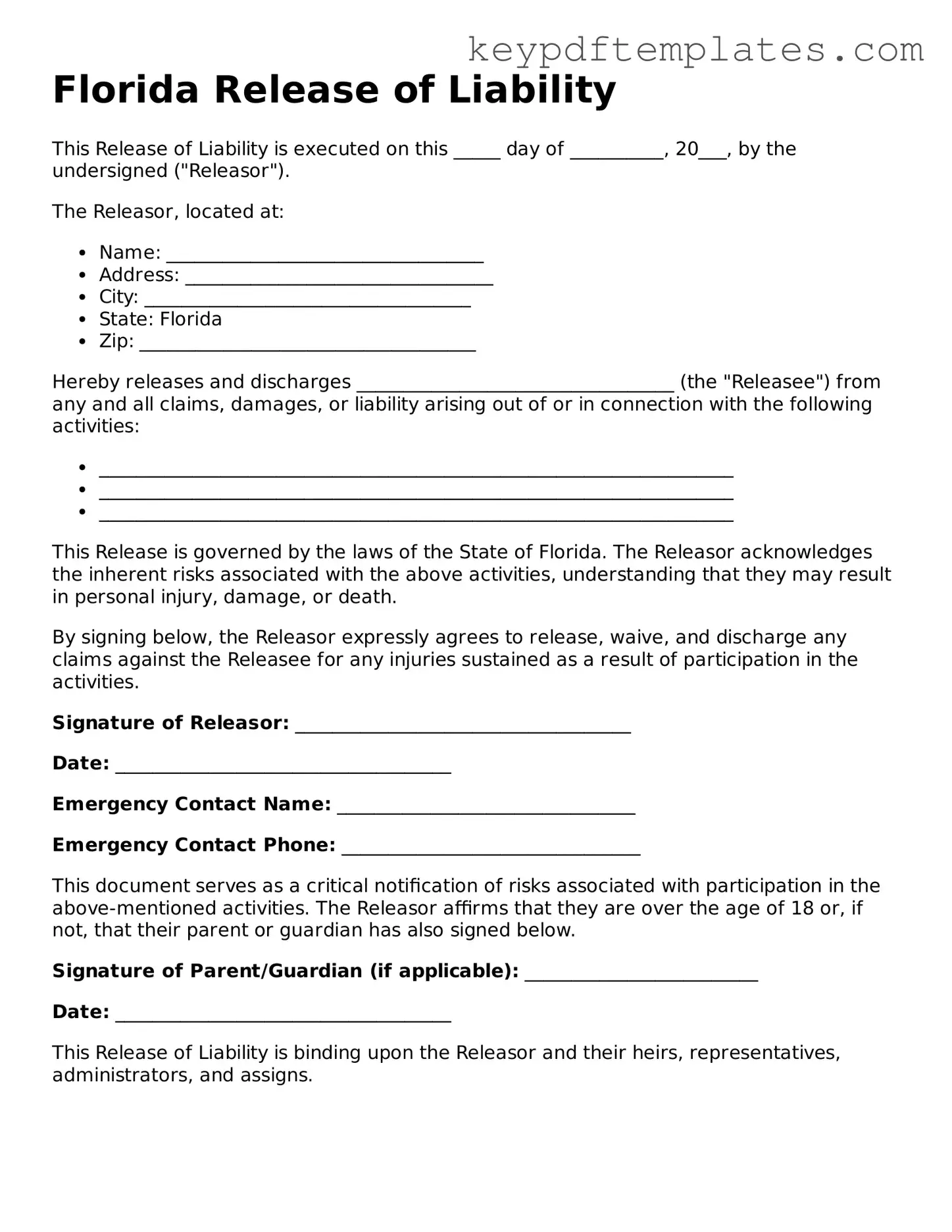Legal Release of Liability Document for the State of Florida
The Florida Release of Liability form is a legal document designed to protect one party from legal claims or lawsuits that may arise from activities or events. By signing this form, individuals acknowledge the risks involved and agree to relinquish their right to seek compensation for injuries or damages. Understanding the implications of this form is crucial for both participants and organizers in various activities.
Modify Document Online
